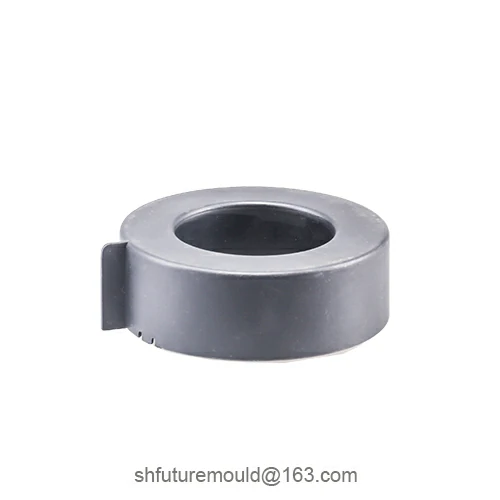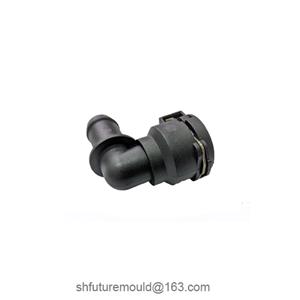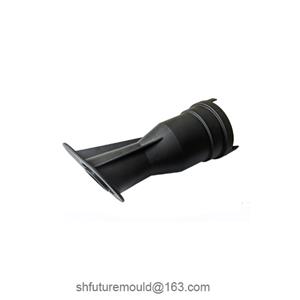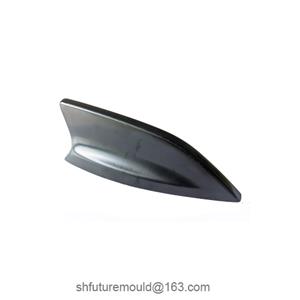Vertical Injection Molding Machines and Precision Injection Molding for Sensors
In modern industry, with the rapid development of electronics technology, the application of sensors is becoming increasingly widespread in various fields such as automotive, medical, and consumer electronics. To meet the high precision and high-reliability requirements of sensors in these fields, precision injection molding has become an important process in sensor production. As a key device in precision injection molding, the vertical injection molding machine, with its unique structure and performance advantages, has promoted the development of precision injection molding technology for sensors.
Characteristics and Advantages of Vertical Injection Molding Machines
Compared to traditional horizontal injection molding machines, vertical injection molding machines have unique structures and working principles, making them especially suitable for the manufacture of precision components. The injection method of vertical injection molding machines is to inject and close the mold in a vertical direction, with the injection unit and the mold connected vertically. This design offers several significant advantages, particularly for the production of precision sensor parts.
1. Space Saving:
Due to the vertical arrangement of the injection unit, vertical injection molding machines occupy less floor space, making them ideal for factories with limited space and particularly suited for producing small sensor components.
2. High-Precision Control:
Vertical injection molding machines offer strong mold clamping force and precise injection process control. Accurate temperature control, pressure control, and injection speed control ensure high precision and consistency in sensor parts production, reducing dimensional deviations and improving production efficiency.
3. Advantages of Insert Injection Molding:
Vertical injection molding machines are particularly suitable for insert molding, where metal parts or other materials are inserted into plastic components. In sensor production, it is often necessary to insert conductive metals, sensor elements, etc., into plastic casings. The design of vertical injection molding machines makes this process more convenient and stable.
4. Automation and Efficiency:
When equipped with automated equipment, vertical injection molding machines can achieve automatic feeding, automatic part removal, and automatic insert placement, greatly improving production efficiency. This is particularly advantageous in large-scale production, enabling high-efficiency, low-cost manufacturing.
Requirements for Precision Injection Molding of Sensors
In sensor applications, precise operation is often required in extremely small spaces, so their casings and internal components must have very high precision and performance. The precision injection molding process for sensors has stringent requirements for molds, injection molding machines, and materials.
1. Dimensional Precision:
Sensor parts often have complex shapes and require very fine dimensions. For example, the casings of medical sensors typically need micron-level precision, and any dimensional deviation may affect the sensor's normal operation. The precise control of parameters such as temperature, pressure, and injection speed during the precision injection molding process ensures stable and high-precision sensor parts.
2. Surface Quality:
The appearance quality of sensors is critical. The surface of casings and components must be smooth and flawless to prevent any performance issues caused by surface inconsistencies or contamination. Vertical injection molding machines, with their precise temperature control systems, can manage the flow and cooling rates of molten plastic, minimizing surface defects and ensuring high-quality surfaces.
3. Material Selection:
Sensor materials often have very specific requirements. For example, plastics with good electrical conductivity, UV resistance, oxidation resistance, or biocompatibility for medical environments may be needed. Vertical injection molding machines can precisely adjust the molding process to ensure optimal performance of materials based on their specific characteristics.
4. Stability and Consistency:
In large-scale production, batch consistency of sensors is crucial. Vertical injection molding machines, through their high-precision control systems, can ensure the consistency of size, shape, and functionality for each product, ensuring that each batch of sensor products meets the desired standards.
Applications of Vertical Injection Molding Machines in Sensor Precision Injection Molding
1. Sensor Casing Production:
The casing of a sensor needs to have high strength, high precision, and good surface quality. With stable mold clamping force and precise control systems, vertical injection molding machines can efficiently produce casings that meet the required standards.
2. Insert Molding:
In the manufacture of some sensors, it is often necessary to insert metal parts, conductive components, or core sensor elements into plastic casings. The advantages of vertical injection molding machines in insert molding are clear. Through precise mold design, metal parts or other inserts can be accurately placed into plastic molds, and the injection molding process can tightly bond them with the plastic, achieving electrical connections, protection, and integrated casings.
3. Micro Sensor Production:
With the development of technology, the use of miniaturized sensors is widespread, and producing these microsensors requires extremely high precision from the injection molding machine. Vertical injection molding machines, offering precise injection pressure and temperature control, are very suitable for producing micro-sensor casings and their precision components.
4. High-Performance Material Molding:
Sensors often require materials with special properties, such as heat resistance, UV resistance, or chemical corrosion resistance. Vertical injection molding machines can precisely control the temperature and pressure during the molding process, ensuring that these high-performance materials achieve optimal physical properties during formation.




